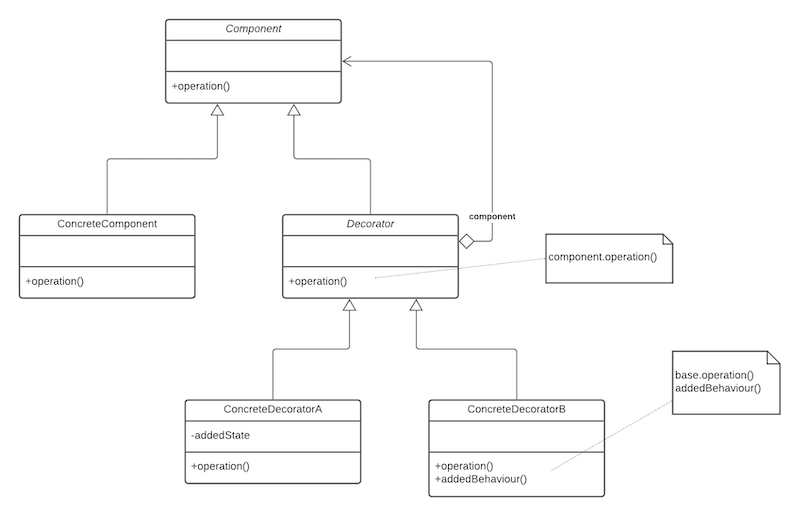Decorator Pattern

The decorator pattern is used to attach additional responsibilities to an object dynamically. The object provides
the basic functionality, but you need a variety of additional functionality to be added at run-time.
For example, you want to add a header and / or footer to an invoice print, and the header or footer can also vary.
The power of the Decorator pattern is that the instantiation of the chain of objects is completely decoupled from the
client objects that use the decorated ConcreteComponent. It allows for extending the functionality of an object without
resorting to sub-classing.
The ConcreteComponent is the class having the functionality added to it by wrapping it with successive ConcreteDecorators
in a chain. The chain of instantiation always ends with the ConcreteComponent. Create an abstract class that
represents the original class and the new functions to be added. In the decorators, place the new function call before
or after the trailing calls to get the correct order.
The Decorator's inheritance of Component is for type matching, not to inherit behaviour.
The decorator wraps a Component because it aggregates it, i.e. it holds a pointer to it.
Decorator is shown as abstract, the concrete decorator classes can add new methods and/or attributes; but typically by
doing computation before or after an existing method in the Component.
Some example code for the creation of an object, and subsequent wrapping with decorators is found below
Component myComponent;
myComponent = new SalesTicket();
myComponent = new Footer1(myComponent);
myComponent = new Header1(myComponent);
return myComponent;
The chain can be identified by reading the code backwards. The Header1 decorator wraps Footer1, and as per the rules
of the decorator pattern, the chain ends with the SalesTicket object. In an assumed print() method, the decorators
could add something to be printed before calling the next object in the chains print() method, or after.